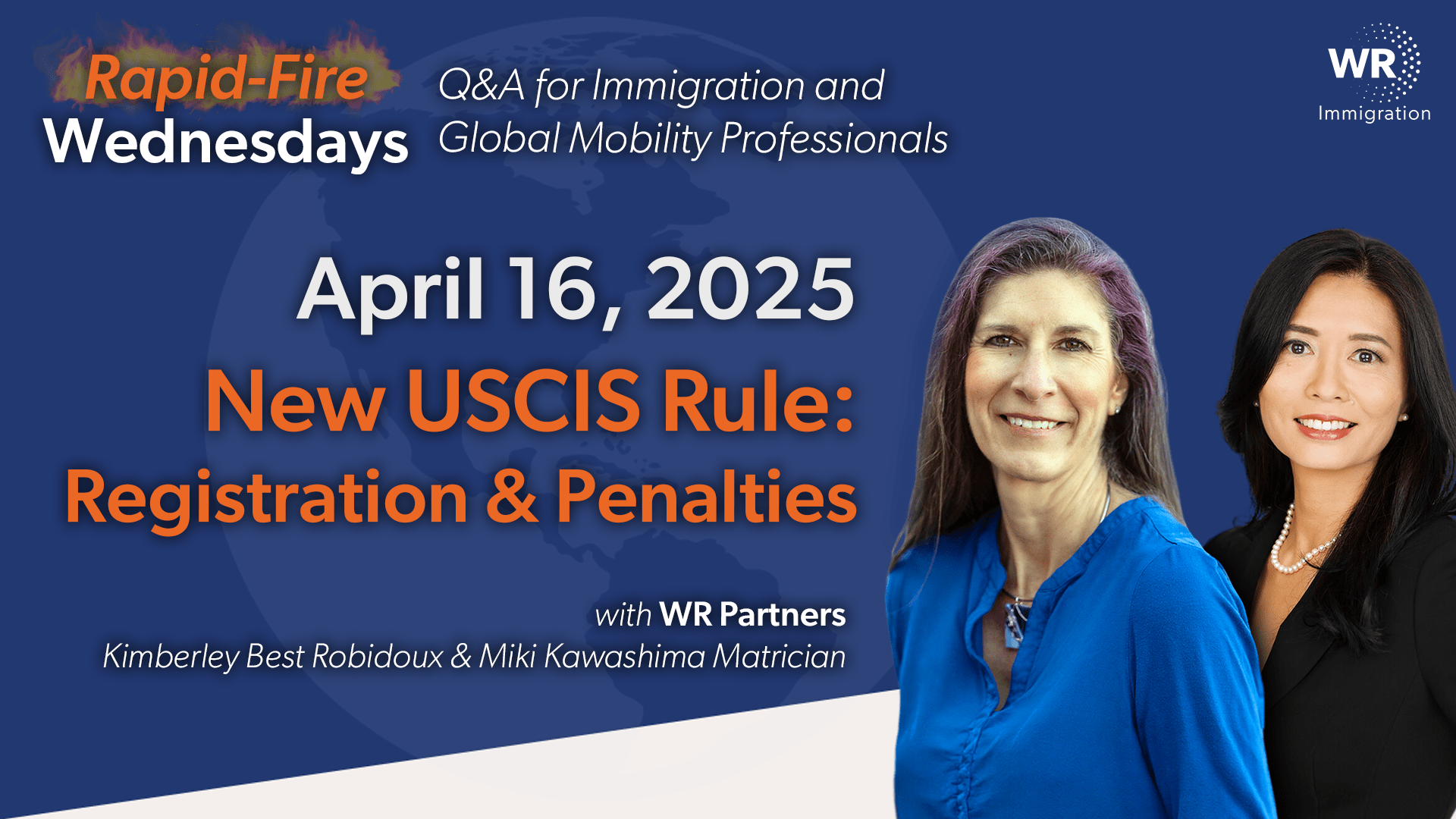The transcript version of our weekly Q&A livestream for corporate immigration professionals. Join our Immigration News Digest Newsletter for more immigration updates.
By Kimberley (Best) Robidoux & Miki Kawashima Matrician
🔥 Question: What is the new registration requirement that went into effect on April 11th?
Response: The registration requirement, based on the January 20th executive order titled Protecting the American People Against Invasion, requires certain foreign nationals to register via their USCIS online account. A lawsuit was filed to stop this rule through a temporary restraining order, but the judge did not grant it. As a result, the rule became effective April 11th.
🔥Question: Who needs to register under this new requirement?
Response: The rule targets individuals who have not yet been registered. Those already registered—such as lawful permanent residents, I-94 recipients, EAD holders, and individuals in removal proceedings—do not need to take further action since they’ve already been registered and fingerprinted. On the other hand, those who must register include undocumented immigrants, some DACA and TPS applicants, and Canadian visitors entering through land borders intending to stay for 30 days or more. Most foreign national workers who already hold I-94s or EADs are exempt, even if their visas have since expired.
🔥Question: What about children under 14? Are they required to register?
Response: Generally, children under 14 with I-94s and visa stamps are considered registered and don’t need to take further action. However, once they turn 14, they must register within 30 days—even if they had I-94s previously. Parents or legal guardians can handle the registration on their behalf. For lawful permanent resident children turning 14, they are required to file Form I-90 with USCIS, which is a separate process.
🔥Question: How does someone go about registering under this new rule?
Response: Individuals required to register must create a USCIS online account via myUSCIS and submit Form G-325R, which asks for biographic information. For children, parents or legal guardians must create a separate account and submit the form on their behalf.
🔥Question: What happens after the registration form is submitted?
Response: USCIS will schedule a biometrics appointment where the registrant must provide fingerprints, a photo, and a signature. After these steps are complete, proof of registration—called the Proof of Alien Registration—will be posted to the registrant’s myUSCIS account. Registrants must print and carry this proof as evidence of compliance. For foreign nationals like Canadian nonimmigrants who are exempt from biometrics, the registration still triggers the creation of the Proof of Alien Registration document, which should also be printed and carried.
🔥Question: Are there any additional requirements under this rule?
Response: Yes. Non-citizens are required to carry proof of registration at all times—whether it’s an I-94 printout or the online Proof of Registration document. Additionally, there’s a longstanding rule that requires individuals to file Form AR-11, Change of Address online within 10 days of changing their address.
🔥Question: What are the penalties for not complying with these rules?
Response: Willful failure to comply with the registration requirement can result in a fine of up to $5,000 and imprisonment for up to six months. The same penalties apply for failure to carry evidence of registration. For not updating an address as required, penalties include fines up to $5,000 and up to 30 days in jail.
Send us your questions via DM or using the below link!
HR Question Submission Form | Rapid-Fire Wednesdays
See you next week!


